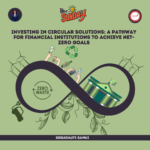By Koshica Oberoi
The demand for the yellow metal- gold is not just for consumption but it is also driven by investment. So, now let’s look at how price including various other factors affect the investment demand for gold. The gold prices have stopped rallying, unlike 2012, when gold prices were racing up due to growing consumer demand in India along with expected demand from investors pushed up the prices to spectacular heights.
The surge in price of gold halted by the end of 2015, considered to be the base for many years. Although gold prices have delivered gains of 30% since 2015, there are today many factors exerting compelling pressures on gold prices- some propelling them further and others dampening them. The highest consumers of gold, India and China, witness a decline in the demand because of which it is expected that the consumer demand will remain flat. Therefore, it is investment demand for gold that will support the gold prices. The recent scenario of increasing geopolitical tensions, inflation and unceasing rally made by stocks in India and US, makes gold a safe haven and an attractive diversifier for the investors. The demand for gold can be classified as follows:
Jewellery consumption: 50%
Investment: 25%
Addition to Central bank’s reserves: 10%
Industrial use: 15%
In 2013, the demand for gold spurred as the prices were on a fall. But after 2013 heighs, the demand was on a decline in China, India, other West Asian countries and the Americas because of various reasons. Regulatory clampdown hampered the demand in India, declining crude oil prices affected demand consumption was moderate, averaging around 116 tonnes in the first quarter. The unorganised sector in India was impacted due to GST, it increased the compliance burden. The purchase of gold jewellery was brought under the Prevention of Money Laundering Act (PMLA), impacting sales in rural India. These norms were although relaxed during the festive season. The last quarter observed an increase in imports indicating that the demand will pull up.
Gst is expected to be transient, relaxation in PMLA, budget allocation focussing on rural India will lead to a surge in gold demand. The trend has changed as the current generation prefers lighter and innovative designed pieces as against heavy traditional jewellery. Moreover, travel, entertainment and dining are taking out the major chunk from the spending. In Western Asia, the demand is down by almost 30%. In the US, improving economic conditions supported the demand. In Russia, central bank buying gold to strengthen their proportion of gold reserves in the Forex. Similarly, countries like Turkey, Kazakhstan and Mongolia, have also been stocking up on gold. But these will not sustain as these decisions are driven by geopolitical consideration.
Demand for gold ETF fell out of favour because of the crash in gold prices in 2013, which revived in 2016. The assets under management, however, remained stagnant. The largest market of ETFs is North America which saw a sharp 83% Y-O-Y decline in the September 2017 quarter as the global economy recovered and the equity market gave stellar returns.
However, in China, demand for gold bars and coins went up by 57% in September 2017 as fears of further depreciation on Yuan and the increasing inflation moved investors to gold. Various other factors that will drive the gold demand. Firstly, if geopolitical tensions rise, gold will become a safe haven for investors. Secondly, the global equity market has been continuously rising for the past 2 years, so there is a long-awaited correction, and it has already started to happen. A fall in equity prices will trigger the shift of portfolio allocation to gold. Thirdly, rising inflation will impact the demand as gold is considered the hedge for inflation. Some fear that as the Federal will hike prices, gold prices would fall, but history has always proved whenever there was a rate hike, in 1994, 1999 and 2004, the prices of gold rose.
Another factor that could steer up the gold prices is the outlook on supply. The gold supply is expected to fall after 2019. Due to a steep fall in gold prices in 2013, and the volatility in prices then, investment in gold production has dropped. The number of new mines has fallen recently. With the expectation of gold supply to reduce, there will be a support for gold prices. This will make gold a good diversifier for any portfolio.
It is recommended to make allocation in gold preferably in the form of sovereign gold bonds.














Interesting Read